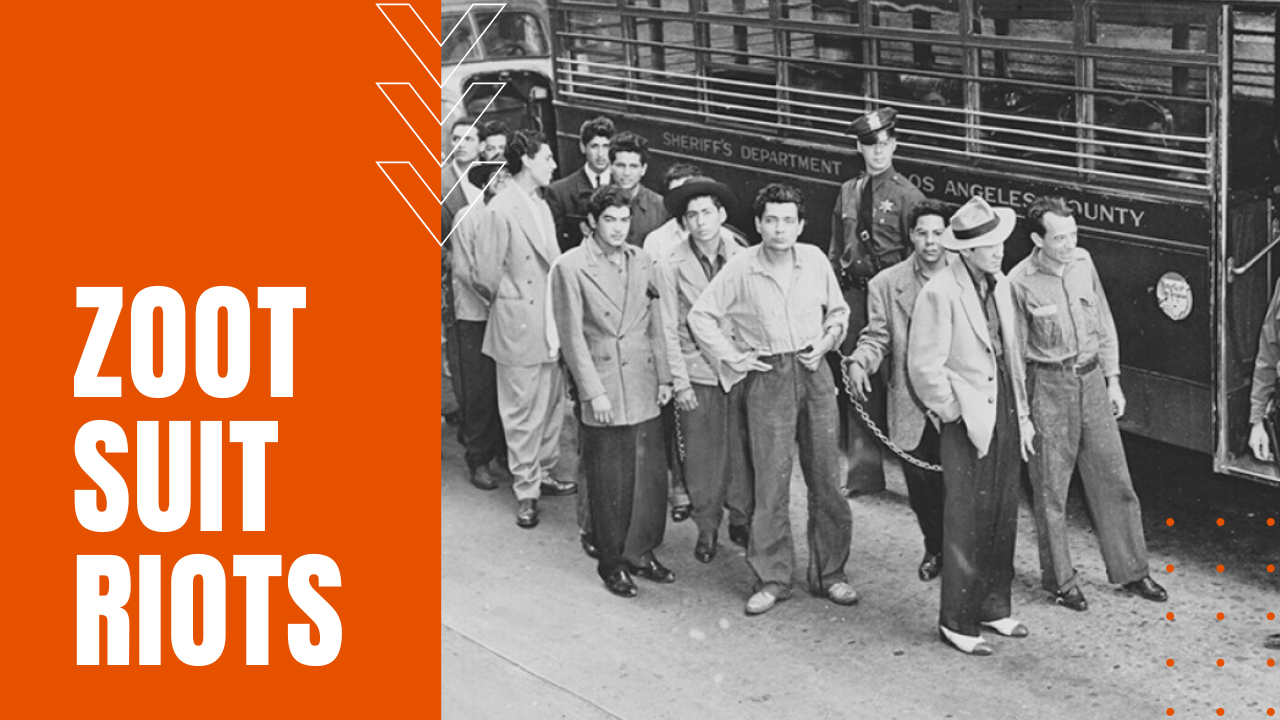Zoot Suit Riots of 1943

Born during the hardscrabble days of the Great Depression, style-conscious dancers in Harlem began wearing baggy suit coats and trousers that exaggerated their movements, along with glittering watch chains and a variety of hats ranging from fedoras, porkpies and sombreros.
Zoot Suit Stereotypes
Popularized by such jazz greats as Cab Calloway during the Harlem Renaissance, the zoot suit craze spread across the country like wildfire, particularly among young African American and Mexican American men, which soon caused affluent whites to view minorities donning zoot suits as gang members, thugs and juvenile delinquents.
The stereotypes worsened after America’s entry into World War Two, when zoot-suiters used bootleg tailors in Los Angeles and New York, despite the nation’s rationing of silks, wools and other essential fabrics, making the zoot suit synonymous with unpatriotic, un-American behavior.
The Zoot Suit Riots of 1943
During the summer of 1943, tensions between zoot-suiters and white enlisted men in and around Los Angeles boiled over into abject violence, when a May 31st clash between uniformed servicemen and Mexican American zoot-suiters—known a pachucos—resulted in the beating of a U.S. sailor. Three nights later, some 50 sailors took to the streets of downtown L.A., attacking anyone wearing a zoot suit, which over the next several days, exploded into a series of large-scale riots, as angry white stripped pachucos and other minorities of their zoot suits, leaving them bloodied and half naked on streets and sidewalks.
Thousands more joined in the zoot suit hunt, including servicemen, off-duty policemen and bloodthirsty civilians, charging into restaurants and movie houses in search of anyone wearing a zoot suit or sporting a duck-tail haircut. Before the first week of June was over, the Zoot Suit Riots had spread beyond downtown L.A., including Watts, East L.A. and other surrounding neighborhoods, fueled by thousands of servicemen and civilians alike, who arrived from as far afield as Orange County and San Diego.
The Zoot Suit Riots came to an abrupt end on June 8th, after military leaders in Southern California barred servicemen from leaving their barracks, followed a day later by a ban on zoot suits by the L.A. City Council. Before the year was over, similar racially-inspired incidents would erupt in other major U.S. cities, including Philadelphia, Chicago and Detroit, making the Zoot Suit Riots, an unabashed free-for-all in America’s long embrace of racial hatred.
